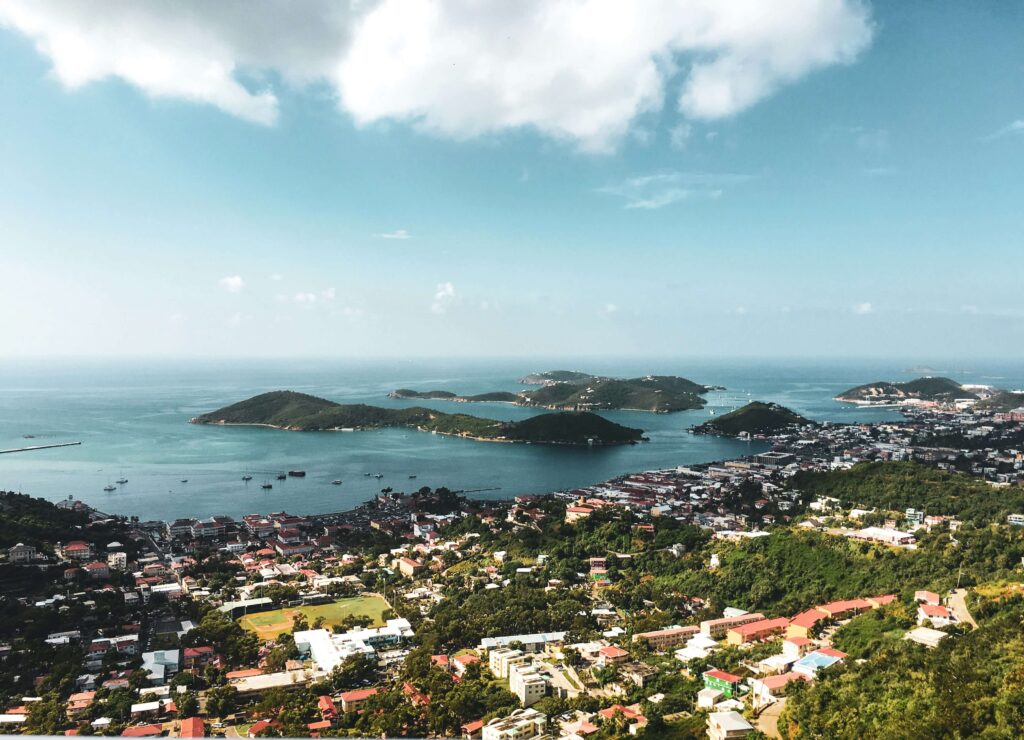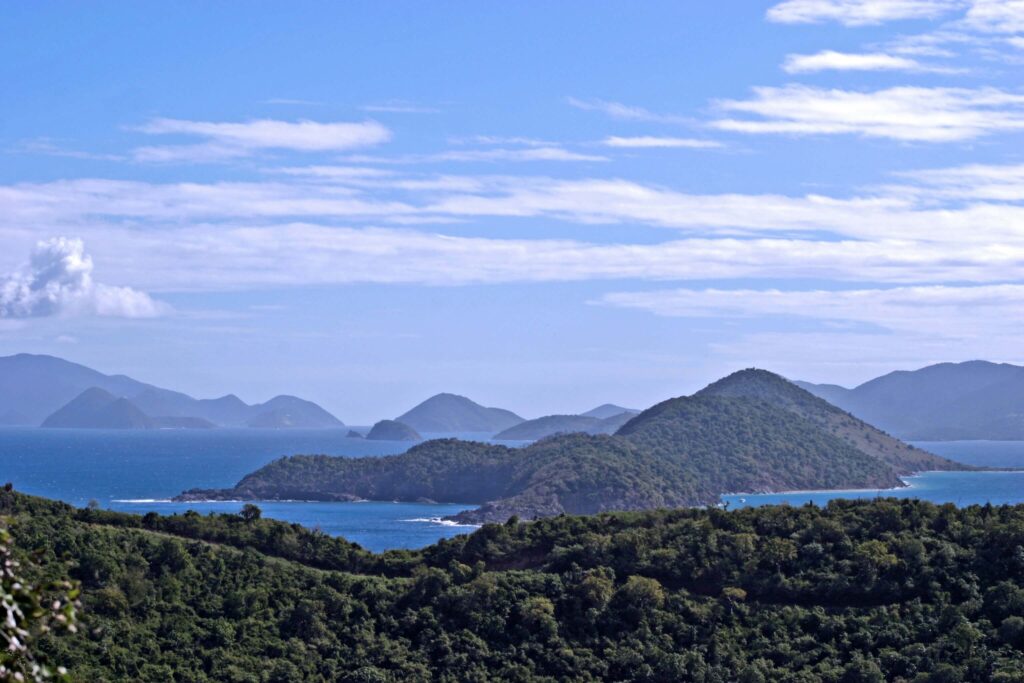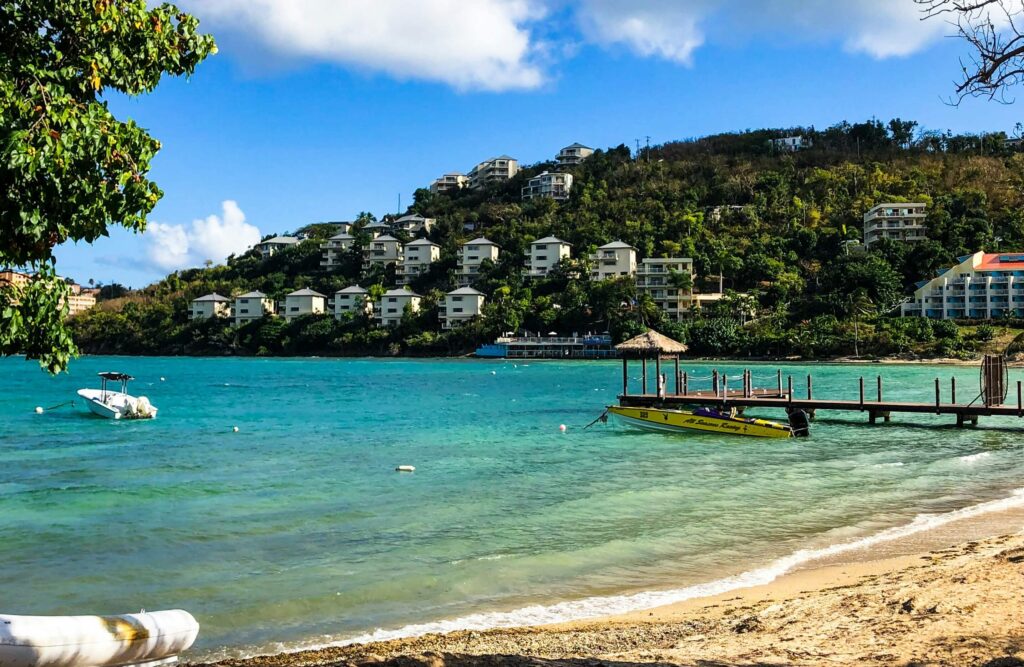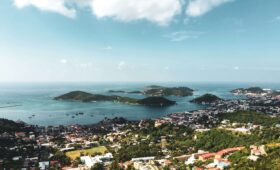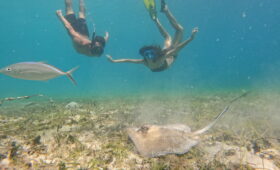Virgin Islands National Park is a true gem of the Caribbean, known for its pristine beaches, lush forests, and vibrant marine life. Covering approximately 60% of the island of St. John in the U.S. Virgin Islands, this national park offers visitors a unique blend of natural beauty and historical significance. Established in 1956, the park has since become a haven for both conservationists and tourists, providing a sanctuary for wildlife and a paradise for adventure seekers.
Early Inhabitants and Indigenous Cultures
Long before European colonization, the Virgin Islands were inhabited by indigenous peoples such as the Arawaks and the Caribs. These early inhabitants left behind a rich archaeological record, including petroglyphs and artifacts that offer insights into their daily lives and spiritual practices.
European Colonization and Its Impact
The arrival of Europeans in the 15th century marked a significant shift in the region's history. The islands were claimed by various European powers, including the Spanish, Dutch, and Danish. The establishment of plantations led to the importation of enslaved Africans, profoundly impacting the local culture and demographics.
Establishment of the National Park
In the mid-20th century, efforts to preserve the natural beauty and historical heritage of the Virgin Islands culminated in the establishment of Virgin Islands National Park. Philanthropist Laurance Rockefeller played a pivotal role in this process, donating significant land holdings to the U.S. government to create the park.
Key Historical Events
Throughout its history, Virgin Islands National Park has been the site of numerous significant events, from battles and pirate activity to the rise and fall of sugar plantations. These historical narratives are preserved in the ruins and landmarks scattered throughout the park.
Conservation Efforts Over the Years
The park has been at the forefront of conservation efforts, aiming to protect its unique ecosystems and historical sites. Initiatives include the restoration of coral reefs, reforestation projects, and the preservation of historic ruins.
Geography and Natural Features
Location and Size of the Park
Virgin Islands National Park spans over 7,000 acres on the island of St. John, with additional marine areas extending the park's boundaries into the surrounding Caribbean Sea. Its strategic location makes it a vital refuge for a variety of terrestrial and marine species.
Climate and Weather Patterns
The park enjoys a tropical climate, characterized by warm temperatures year-round and distinct wet and dry seasons. These weather patterns influence the park's ecosystems and visitor experiences, making certain times of the year more favorable for specific activities.
Flora and Fauna
The biodiversity within Virgin Islands National Park is astounding, with hundreds of plant and animal species calling it home. From dense tropical forests to vibrant coral reefs, the park supports a wide range of life forms, each contributing to the ecological balance.
Unique Geological Features
Geological formations such as volcanic rock outcrops, sandy beaches, and underwater reefs add to the park's allure. These features not only enhance the scenic beauty but also provide habitats for various species and offer opportunities for geological studies.
Activities and Attractions
Hiking Trails
The park boasts numerous hiking trails, each offering unique vistas and encounters with nature. Popular trails like the Reef Bay Trail lead hikers through diverse landscapes, including historical ruins and petroglyph sites.
Snorkeling and Diving Spots
Virgin Islands National Park is renowned for its snorkeling and diving opportunities. Trunk Bay, in particular, features an underwater snorkeling trail that guides visitors through a vibrant coral ecosystem teeming with marine life.
Historical Landmarks and Ruins
Scattered throughout the park are remnants of its colonial past, including sugar mill ruins and plantation estates. These landmarks provide a tangible connection to the island's history and the people who once lived there.
Guided Tours and Educational Programs
For those seeking a deeper understanding of the park's natural and cultural heritage, guided tours and educational programs are available. These experiences are led by knowledgeable rangers and local experts like IslandBuddy, offering insights into the park's history, ecology, and conservation efforts.
Popular Beaches
Virgin Islands National Park is home to some of the world's most beautiful beaches. Caneel Bay, Honeymoon Beach, and Maho Bay are just a few of the idyllic spots where visitors can relax and soak in the stunning surroundings.
Get a Free Tour Consulation From IslandBuddy
Flora and Fauna
Native Plant Species
The park is a botanical treasure trove, with a diverse array of native plant species. From towering mahogany trees to delicate orchids, the flora of Virgin Islands National Park is both varied and vital to the ecosystem.
Endemic and Migratory Birds
Birdwatchers will find the park to be a paradise, with numerous endemic and migratory bird species. The island serves as a crucial stopover for migratory birds, making it a hotspot for avian diversity.
Marine Life Diversity
The waters surrounding Virgin Islands National Park are a marine biologist's dream. The coral reefs are home to an array of marine species, including colorful fish, sea turtles, and rays, all contributing to a vibrant underwater ecosystem.
Conservation Programs for Wildlife
The park is actively involved in various conservation programs aimed at protecting its wildlife. Efforts include monitoring endangered species, habitat restoration, and public education campaigns to promote sustainable practices.
Cultural Significance
Influence of Indigenous Cultures
The legacy of the indigenous peoples is still evident in the cultural fabric of the Virgin Islands. Traditional practices, crafts, and stories continue to influence the cultural landscape of the region.
Cultural Heritage and Traditions
The park celebrates the rich cultural heritage of the Virgin Islands through various events and activities. Visitors can experience local music, dance, and crafts, gaining a deeper appreciation for the island's cultural traditions.
Local Festivals and Events
Throughout the year, the Virgin Islands host numerous festivals and events that highlight the cultural diversity and history of the region. These gatherings provide a lively and immersive experience for both locals and tourists.
Visitor Information
Best Times to Visit
While the park is open year-round, the best time to visit depends on your interests. The dry season, from December to April, is ideal for outdoor activities, while the wet season offers lush landscapes and fewer crowds.
Accommodation Options
From camping sites within the park to luxurious resorts nearby, there are accommodation options to suit every preference and budget. Staying within or near the park allows visitors to fully immerse themselves in its beauty.
Travel Tips and Guidelines
To ensure a safe and enjoyable visit, it's important to follow travel tips and guidelines. This includes packing appropriately, staying hydrated, and being mindful of the environment.
Park Regulations and Safety Tips
Visitors are encouraged to adhere to park regulations to help preserve its natural and historical resources. Safety tips include staying on designated trails, avoiding contact with wildlife, and respecting cultural sites.
Environmental Conservation
Importance of Ecosystem Preservation
Preserving the diverse ecosystems within Virgin Islands National Park is crucial for maintaining biodiversity and ecological balance. The park's ecosystems provide vital services, from supporting wildlife to protecting shorelines.
Ongoing Conservation Projects
Numerous conservation projects are underway to address environmental challenges. These initiatives focus on habitat restoration, pollution control, and the protection of endangered species.
How Visitors Can Help
Visitors can contribute to conservation efforts by practicing responsible tourism. This includes minimizing waste, supporting local conservation initiatives, and spreading awareness about the importance of protecting natural habitats.
Impact on Local Communities
Economic Benefits
Virgin Islands National Park plays a significant role in the local economy by attracting tourists and creating jobs. The tourism industry supports local businesses and provides economic opportunities for residents.
Community Involvement in Conservation
Local communities are actively involved in conservation efforts, working alongside park authorities to protect and manage natural and cultural resources. Community involvement is essential for the success of these initiatives.
Education and Outreach Programs
The park offers various education and outreach programs aimed at fostering a sense of stewardship among residents and visitors. These programs emphasize the importance of conservation and encourage sustainable practices.
FAQs
How do I get to Virgin Islands National Park?
Visitors can reach the park by flying into St. Thomas and taking a ferry to St. John. Once on the island, rental cars, taxis, and public transportation are available to explore the park.
What are the must-see attractions in the park?
Key attractions include Trunk Bay, Annaberg Plantation, and the Reef Bay Trail. Each offers unique experiences, from snorkeling in crystal-clear waters to exploring historical ruins.
Are there any entry fees for the park?
There is no general entrance fee for Virgin Islands National Park, but certain amenities and guided tours may have associated costs.
What is the best time of year to visit?
The dry season, from December to April, is the most popular time to visit due to favorable weather conditions. However, the wet season also offers its own charm with fewer crowds and lush greenery.
What activities are available for families?
Families can enjoy a variety of activities, including hiking, snorkeling, beach outings, and educational tours. The park's diverse offerings ensure there's something for everyone.
How can I contribute to the conservation efforts?
Visitors can support conservation by following park guidelines, participating in volunteer programs, and donating to conservation initiatives. Every small action helps protect the park for future generations.
Conclusion
Virgin Islands National Park is a testament to the natural and cultural richness of the Caribbean. Its stunning landscapes, diverse wildlife, and historical significance make it a must-visit destination. By understanding and appreciating the park's history and beauty, visitors can play a part in preserving this extraordinary place for generations to come.

